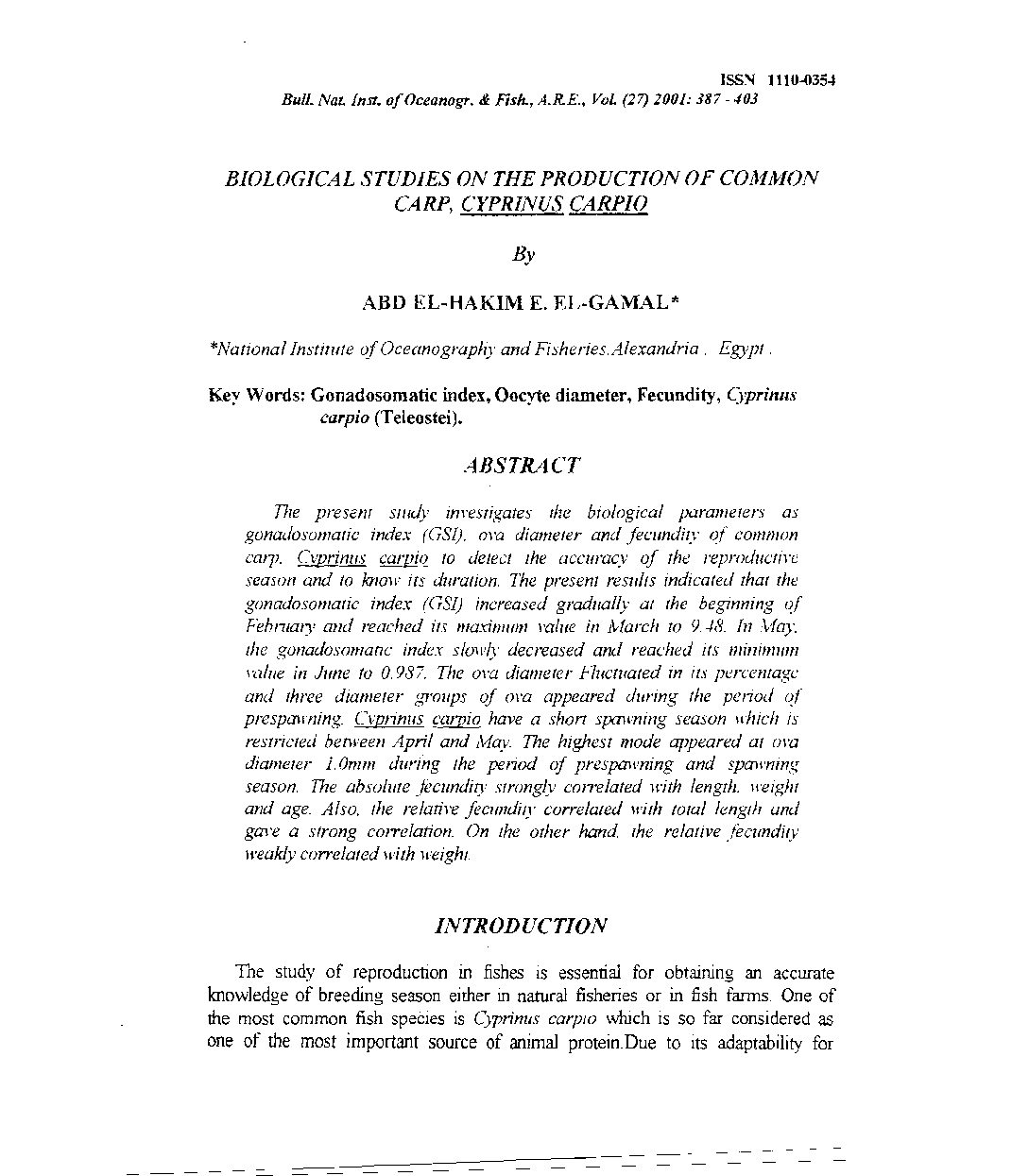Categories
vol-27APPLICATION OF RAPD TECHNIQUE IN FISH:
1- DETECTION OF POLYMORPHISMAMONG THREE GENERA
(J]LAPIA, SAROTHERODON AND OREOCHROMIS) AND BETWEEN
TWO SPECIES (OREOCHROMIS AUREUS AND OREOCHROMIS
NILOTICUS) OF TILAPIA.
BY
MMM Ahmeif, B.A. AliI and S. Y. El-Zaeem2
INucleic Acid Research Dept., Genetic Engineering aml Biotechnology Research Institute (GEBRl),
. Mubarak City For Scientific Research & Technology ApplicatiollS, Alexandria., Egypt.
1 Animal and Fish Production .Department, Faculty ofAgriculture, Saba-Bacha., Alexandria
University, AlexllJldria., Egypt.
Keywords: Tilapia fish, genera, species, RAPD.
ABSTRACT
Random amplified polymOlphic DNA (RAPD) analysis was applied
to the four-ti lapia species (three genera): redbelly tilapia (J}lapia
zillii), white tilapia (Sarotherodon galilaeus), blue tilapia
(Oreochromis aureus) and Nile tilapia (Oreochromis niloticusJ. Fifteen
random lO-mer and five 20-mer primers were used to assay
polymorphisms among three genera and between two species. Different
RAPD fragment patterns were observed for different genera and
different species. Results showed that there. are great differences among
the three genera of tilapia fish. Also, it was found specific marker can
be discriminate O. niloticus from the other species. Moreover, data
demonstrated that RAPD marker was useful for systematic investigation
at the level oftilapia species.







